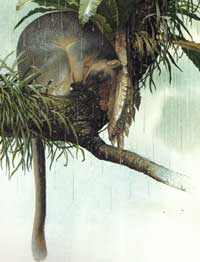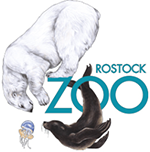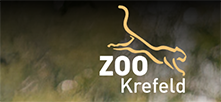Lumholtz’s Tree Kangaroo
Family: Macropodidae
Genus: Dendrolagus
Species: lumholtzi
Characteristics: have a cream chest and stomach, black feet with a grey back consisting of black tips.
Males: 7.2 kg (Average weight)
Females: 5.9 kg (Average weight)
Distribution: montane rainforest of far north Queensland, Australia.
Elevation: 300 – 1,600 meters above sea level.
Diet: epiphytic ferns, fruits and leaves.
Reproduction: the rate of reproduction is slow. Pouch life is about eight months for young Lumholtz’s and youngsters can accompany their mothers for more than two years.
Conservation Status: Least Concern (IUCN)
Habits:
The Lumholtz’s Tree Kangaroo is found in montane rainforest of far north Queensland, Australia. It inhabits elevations from approximately 300 to 1600m. This species total distribution is about 5500 square kilometres. Lumholtz’s Tree Kangaroo is quite different from the other long-footed Tree Kangaroos (the others being Bennett’s and Grizzled) in that it is usually just encountered in mountain forests, i.e restricted to the one type of habitat. Lumholtz’s are the smallest of all the Tree Kangaroos with males averaging 7.2kg and females 5.9kg in weight. With its smalll size and specific habitat requirements it has more in common with members of the short-footed group of Tree Kangaroos.
Lumholtz’s Tree Kangaroo has a cream chest and stomach, black feet with a grey back consisting of black tips. Adult males defend a home range which overlaps home ranges of several females. The home range size for this species is a lot smaller than other species which means it can live in higher densities.
Conservation Status:
In the past the Lumholtz’s Tree Kangaroo was hunted by aborigines and so was less common than it is now. Today it is now common in rainforests areas where it was rare or absent beforehand. Able to persist in the mosaic of fragmented habitat, particularly where there are available habitat corridors. However individuals are vulnerable to dog attacks and cars when moving in the open. Lumholtz’s Tree Kangaroo has been classified as least concern.
References:
Mammals of new Guinea – Tim Flannery (1995)
Tree Kangaroos – a curious natural history – Tim Flannery, Roger Martin and Alexandra Szalay (1996).
Illustrations Peter Schouten.
http://www.iucnredlist.org/details/6432/0

Lumholtz’s Tree Kangaroo
(Dendrolagus lumholtzi)
Illustration – Peter Schouten

Distribution of Lumholtz’s
Tree Kangaroo
References: Mammals of new Guinea – Tim Flannery (1995) and Tree Kangaroos – a curious natural history – Tim Flannery, Roger Martin and Alexandra Szalay (1996). Illustrations Peter Schouten. http://www.iucnredlist.org/details/6435/0
Subscribe to our mailing list
There are many valuable ways in which you can contribute to the Tenkile Conservation Alliance’s vision – which is, the people of PNG value and protect their natural resources, their community and their culture.
Click 'Contribute' button above to learn more.
Subscribe to our mailing list
There are many valuable ways in which you can contribute to the Tenkile Conservation Alliance’s vision – which is, the people of PNG value and protect their natural resources, their community and their culture.
Click 'Contribute' button below to learn more.
















